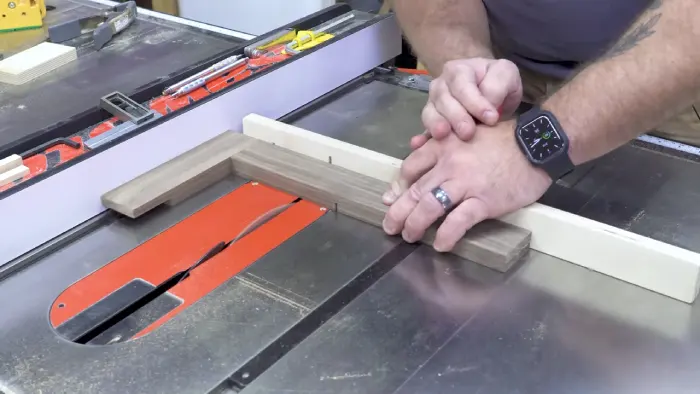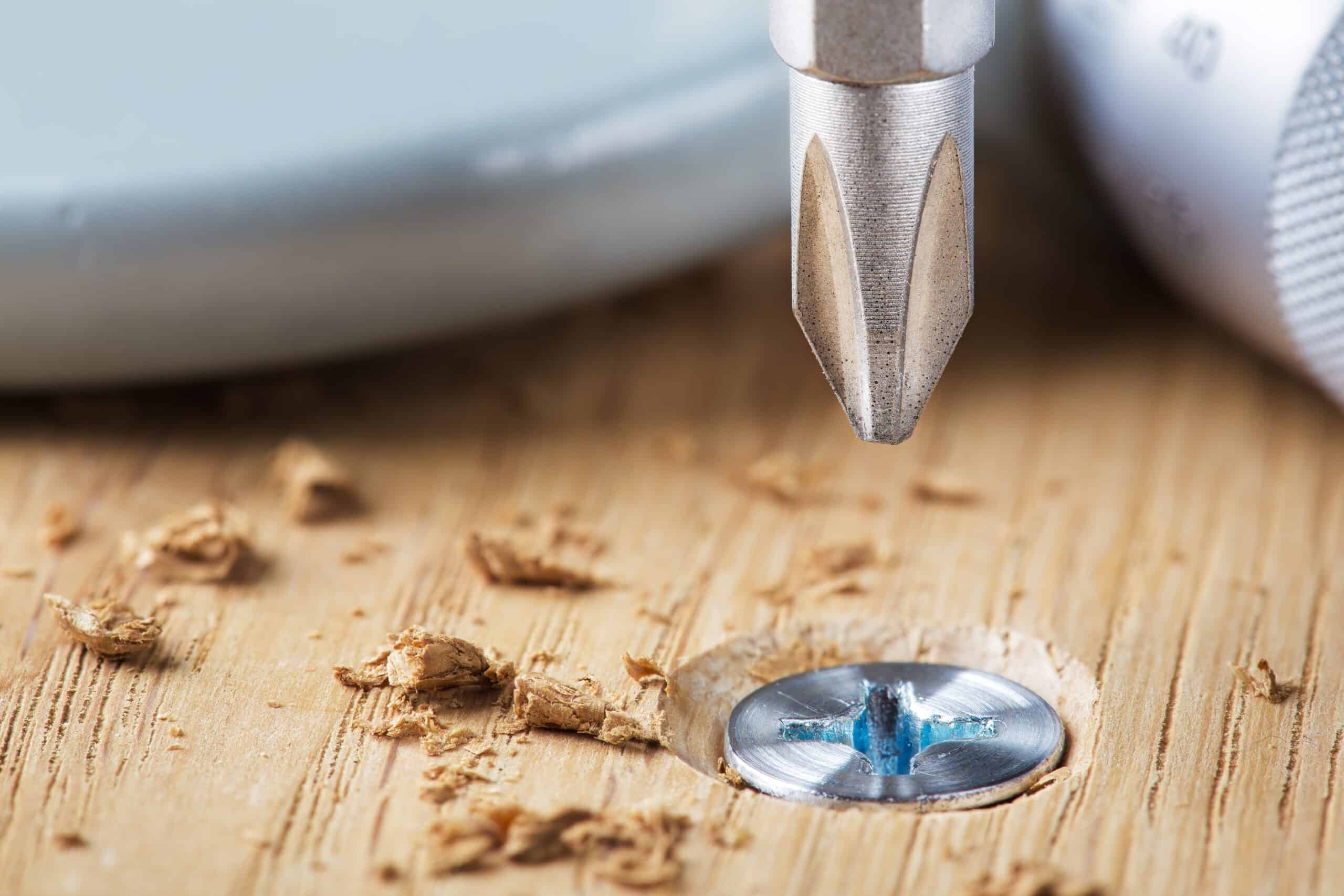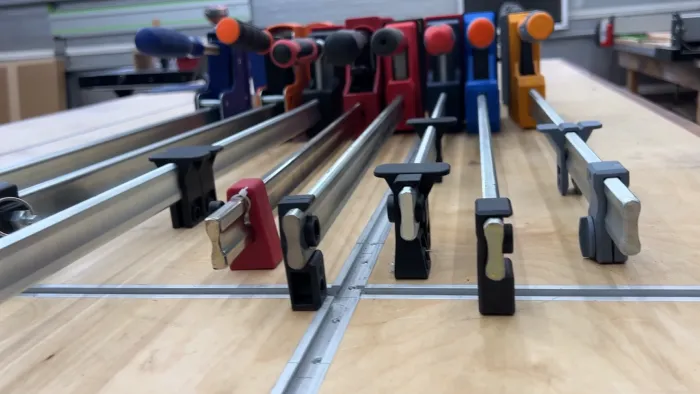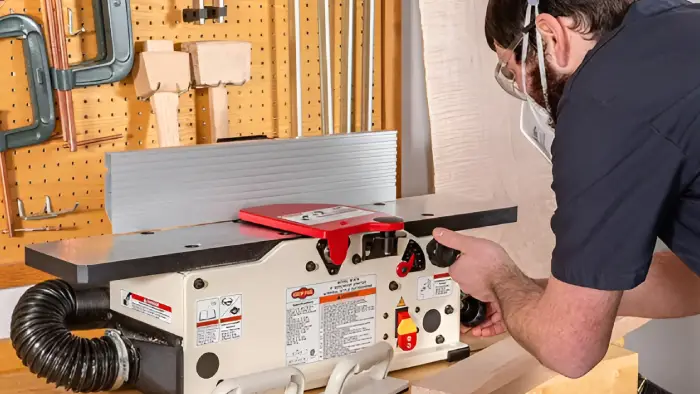WoodenuKnow.com is a participant in the Amazon Services LLC Associates Program, an affiliate advertising program designed to provide a means for sites to earn advertising fees by advertising and linking to Amazon.com and may earn from qualifying purchases.
Miter gauge and the rip fence are two essential tools when working with a table saw for woodworking. But can these tools be utilized together?
Using a miter gauge and a rip fence together can be beneficial for making non-through cuts on your workpiece, but it is not recommended for cross cuts. It can make the on-through cutting process easier, faster, and more accurate than one tool alone.
When it comes to cross cuts, using the two tools together should be avoided as they could cause kickback or have an off-cut piece trapped between the spinning blade and the fence. To ensure safety while using these tools together, certain steps need to be taken, and safety precautions that must be followed.
Here we will discuss when to use miter gauge and rip fence together and when to avoid using them.
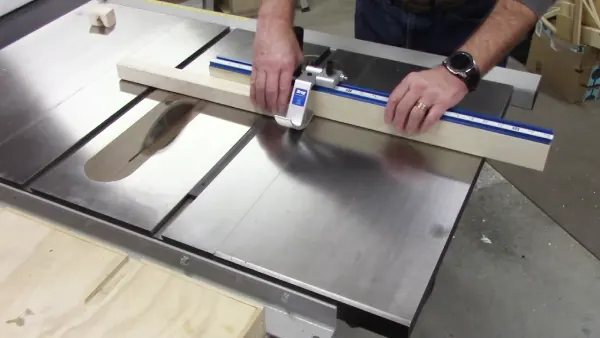
How Can You Use the Miter Gauge and The Rip Fence at the Same Time?
Using the miter gauge and rip fence together begins by setting the rip fence to the desired measurement. The material should then be held firmly against the rip fence while pushing it through with the miter gauge. Doing this allows for more control over the cut than possible when using only one tool.
When making tenons with a table saw, the rip fence provides a solid guide that ensures all four sides of the workpiece will be cut the same, eliminating any chance of kickback. The miter gauge rotates the workpiece at 90 degrees for each pass across the blade, ensuring that each side is precisely aligned.
When Should You Use a Miter Gauge and Rip Fence Together?
Combining the miter gauge and rip fence can effectively make precise non-through cuts when working with wood on a table saw. This method is particularly useful for cutting dados, grooves, half-laps, joinery, and other specific shapes or angles that may be required.
Combining both tools allows woodworkers to create perfect tenons without adjusting their setup over multiple passes or relying on a jig that can cause uneven cutting depths. It also allows them to quickly produce identical pieces of furniture or cabinets that require consistent parts with high accuracy.
Table Saw Safety Precautions for Using Miter Gauge and Rip Fence Together
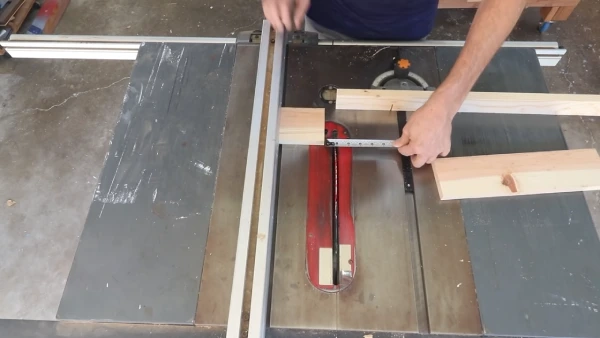
Safety is paramount when using this method. Before cutting with both tools at once, it is important to slide the rip fence out of the way first. This helps to prevent contact between the workpiece and any rotating parts of the saw that could cause injury or damage to material or equipment.
It is also important to use common sense when using this technique. If a certain situation appears unsafe, it’s best to stop and reevaluate before proceeding.
The miter gauge and rip fence should only be used together when absolutely necessary, such as when attempting complex curves or angled cuts where precision measurements are critical.
It’s also worth noting that this approach requires some practice to succeed. You will want to ensure that your cuts are accurate before committing to major projects requiring high accuracy throughout their completion.
When to Avoid Using Miter Gauge and Rip Fence Together?
When making cross cuts, i.e., cutting across the wood grain, it is best to avoid using both components at once as this increases resistance which can cause kickback. This is especially true when cutting with narrow pieces of material or those with knots or other defects in them.
A kickback happens when the spinning blade throws a piece of material back at high speed toward the operator, potentially leading to serious injury. If the board is too wide for the miter gauge, it can bind against the rip fence when sliding along its surface.
They can become trapped between the blade and fence and be thrown back toward you during use.
Options for Accomplishing Cross and Rip Cuts with Miter Gauge and Rip Fence
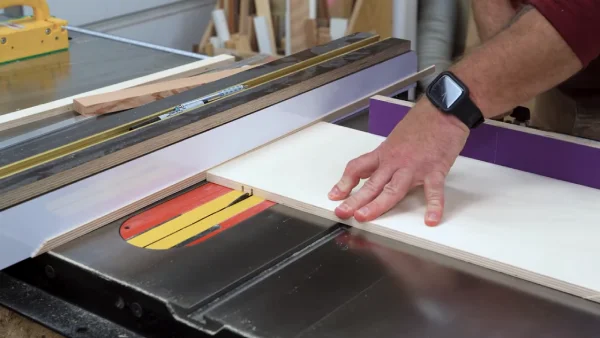
When it comes to making precise cuts in wood, a variety of tools are available to professional carpenters. Cross cut and rip cut are two main types of cuts that need to be made. Cross cuts involve cutting a board at an angle or lengthwise across the grain, while rip cuts involve cutting along the grain’s length.
1. Chop or Miter Saw with Miter Gauge:
Cross Cuts:
A chop or miter saw is the best option for making cross cuts in wood due to its ability to make clean, accurate, angled, lengthwise cuts with a miter gauge. For boards being cut lengthwise on miter saws, a miter gauge should also be used to ensure precision and accuracy.
This involves cutting the material along its length at either 90° or 45° angles. To achieve a straight cut, adjust the miter gauge to your desired angle and then slowly move the blade across the material, ensuring that it follows the path of the miter gauge.
Bevel Cuts:
Bevel cus involve angled cuts across both sides of a piece of material, resulting in an angled edge or beveled profile. To make these types of cuts, adjust the miter saw to your desired angle, usually between 0-50° for standard bevels or up to 52° for compound angles. Then push or pull the material through the blade as you would for a regular straight cut.
Miter Cuts:
Mitre cuts are similar to bevels but require two separate angled pieces joined at their ends rather than one with an angled edge. These pieces must fit together perfectly so that they form an exact 90° corner when placed side by side.
For accurate cuts, using a miter saw, set your miter gauge at exactly 90° and feed each piece through separately until both have been cut perfectly square along their edges.
Compound Cuts:
Compound cuts are essentially more elaborate versions of miters where two pieces are joined together at both ends. They have slightly different angles at each end, usually one end has an angle greater than 45° while the other has an angle less than 45°.
It creates compound corners which look much more complex than simple miters or bevels alone can provide. To make these intricate cuts accurately, use your miter gauge to find two angles that will join perfectly when placed side by side (e.g., one 30° angle followed by another 60° angle).
2. Table Saw with Rip Fence Usage
Table saws are ideal for making rip cuts along the grain of the wood. They can easily handle boards up to 12 inches wide and feature built-in rip fences.
The tool allows you to make perfectly straight cuts without ever having to measure or mark out lengths. When using table saws for width cuts, it’s important to use both the rip fence and the miter gauge in order to get accurate results.
Alternative to Using Miter Gauge and Fence Together
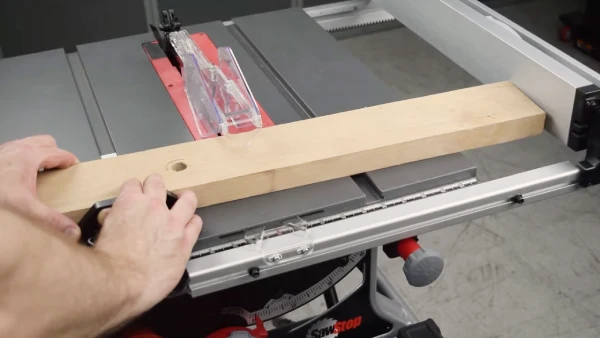
An alternative to using a miter gauge and fence together is to make cuts without the use of either. This can be done if the offcut is free to spin between the blade and fence, in which case the stop block should be removed or set away from the board.
Safety precautions such as wearing safety glasses and double-checking for proper alignment must be taken when making these cuts. Maintaining saw blades well is important, as dull blades can lead to unsafe cutting conditions.
Making cuts without a miter gauge or fence requires the user to have more skill to ensure accuracy. With practice, it can produce quality results on narrow boards that would otherwise be difficult to cut with a miter gauge and fence.
Since fewer components are involved in this technique than when using a miter gauge and fence at the same time, setup time is significantly reduced, given its advantages over using those two tools for certain applications.
This alternative cutting method can be effective for experienced woodworkers who can use it safely and properly.
Can You Use the Miter Gauge for Cross Cutting?
A miter gauge is an essential tool for anyone looking to take their table saw cross-cutting skills up a notch. However, it is important to consider the width of the stock you are working with.
Generally, a miter gauge is designed for crosscutting stock no wider than 12 safely”. If you try to cut through something wider, there is a risk of the miter gauge’s head catching on the edge of the table and resulting in an inaccurate or unsafe cut.
Therefore, if you plan on using a miter gauge for wide cuts, it is important to choose one with adjustable extensions that will ensure accuracy and safety.
What is the Right Miter Gauge for Cross Cutting?
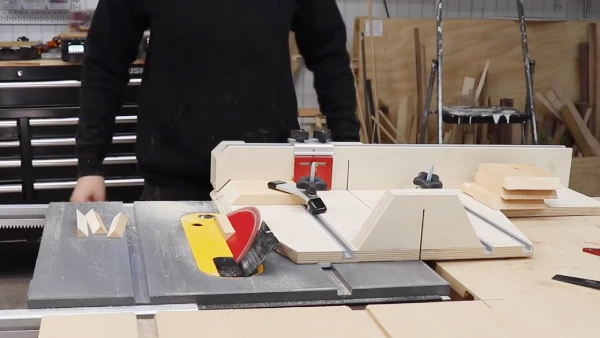
In woodworking, achieving accurate crosscuts is crucial for a polished finished product. Click here to see our experts’ reviews and comparisons of the best miter gauges. These specialized tools are specifically designed to help you accomplish crisp and clean cuts every time.
But finding the top rated miter gauge for a table saw involves considering certain factors. Among these, investing in a gauge boasting solid aluminum or stainless steel construction is important. This will ensure a durable and reliable performance, able to handle even the most rigorous tasks.
An adjustable fence and laser guide system guarantee precise accuracy for every cut, assuring your project is picture-perfect even after repeated use. Look for clear scales, so it’s easy to adjust accurately, and slot compatibility ensures your jig works correctly with your table saw blade.
Bevel stops ensure you get consistently accurate angles each time you set up your cut. Don’t sacrifice quality when it comes to your woodworking projects. Check out our top-rated products and achieve pristine crosscuts with ease.
Why Should You Add an Auxiliary Fence to Your Miter Gauge?
Adding an auxiliary fence to a miter gauge will bring greater control and support to your crosscutting. By reducing the chance of the workpiece twisting during the cut, an auxiliary fence offers the convenience of straighter, cleaner cuts, which are especially useful for longer pieces.
Not only does this provide support for the workpiece, but it also keeps your fingers safe from the blade. Ultimately, you can work with increased confidence and precision on your projects with an auxiliary fence.
Can You Crosscut with a Rip Fence?
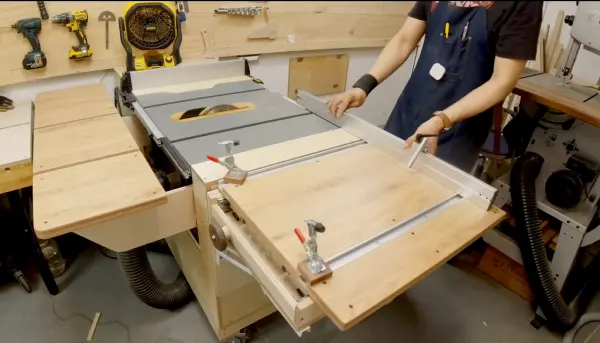
You should not use a rip fence for making crosscuts on a table saw. It may cause damage or kickback if used in this manner.
While ripping requires pushing the workpiece through a blade at high speed, crosscutting requires cutting across the grain of a piece of wood and moving it slowly through the blade to get a clean, finished result.
What Side Should a Rip Fence be On a Table Saw?
When using your rip fence to cut a wide board or plywood, ensure the workpiece is placed between the blade and fence to prevent kickback. Your hands must never be directly near or above the blade while it is running.
Otherwise, this could cause serious injury or damage. Ensure that your rip fence is securely locked into place before beginning any cuts for maximum safety and accuracy.
Uncover the Secrets of Making Perfect Cuts with a Miter Gauge and Rip Fence
Using a miter gauge and rip fence can greatly assist woodworking and carpentry projects. They should never be used together for crosscuts as they could result in dangerous kickbacks. It is important to understand exactly when and how these tools should be used in order to get the best results without any risks.
When done correctly, using a miter gauge and ripping fence together can give you clean cuts with precise measurements that will make every project look professional. Just remember always to keep safety as your top priority.

